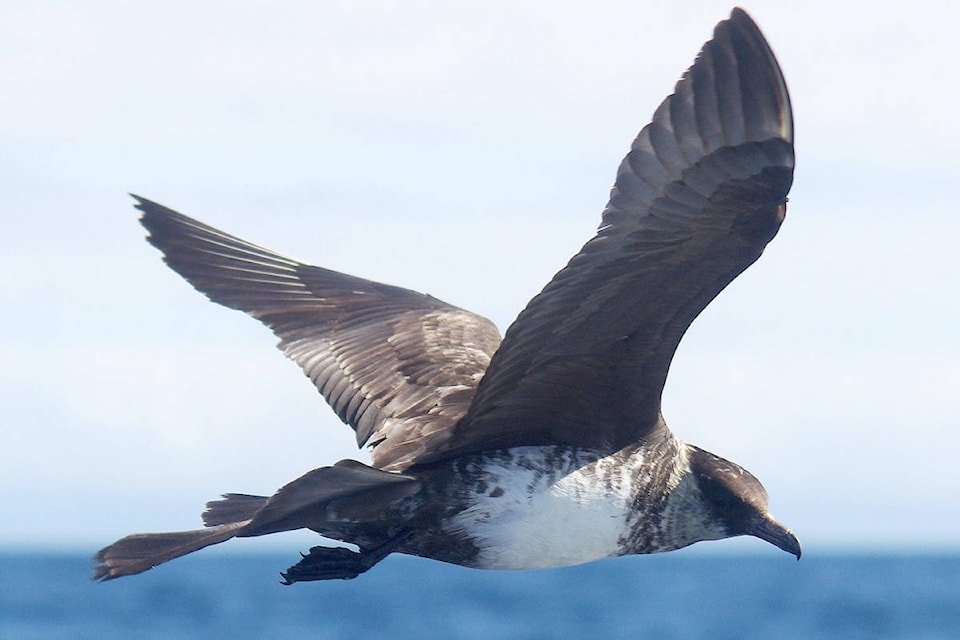By Margo Hearne
Having company on board the Prince Rupert ferry is not a bad thing. Four pairs of eyes are quicker than two. So we racked up interesting numbers of shearwaters, loons, scoters and alcids while Rhonda and Oliver stood out on the chilly deck with Peter and I. We have all been involved in commercial fishing of one kind or another over the years and watching birds on the water is all part of the job. They are a clue as to whether or not there are any fish around. A busy feeding flock on the water shows that there is ‘feed’ around. Feed and fish go together. Some very, very big fish. A Basking Shark got tangled up in our net off Naden Harbour when we were gillnetting for ‘fall dogs’ or Chum Salmon one year. The shark was huge, heavy and lumbering and as it tried to break through the net it caused our 35’ boat to sway back and forth with each slap of its tail. Bruce on the ‘Silver Shadow’ had been fishing alongside and stood off in case we got into deeper trouble and he had to help out. A big beast can take a boat right down with it, but fortunately the shark broke through and was off. Our net was in rags and we had to replace it when we got back to town but we were still afloat. There had been a lot of birds on the water at the time, including a marauding Pomarine Jaeger. Busy days.
READ MORE: On The Wing: Hazy seas and dead Krill
Are whales fish? No. Unlike cold-blooded fish, whales are warm-blooded animals that breathe air. According to scienceline.ucsb.edu marine “mammals exist because about 50 to 60 million years ago, some mammals wandered off the land and into the ocean, and there they evolved into different types of marine mammals. For whales and dolphins, their front legs turned into flippers. Their back legs became really tiny, so tiny that you can’t even see them when you look at these animals, but they have hind legs still inside their bodies - if you see a skeleton of a whale you can see it has tiny leg bones near its tail.” Whales could once have had feet!
This week up to six leviathans fed in the deeps and attracted not only the ‘usual suspects’, but a difficult petrel, a Pomarine Jaeger and a bunch of little Fork-tailed Storm Petrels. Small feed attracts big feed and we are all in this together.
The songbirds are singing in the garden, the White-fronted Geese have left and a pair of Trumpeter Swans arrived to feed along the banks of the Tlell River. Last year at the same time three Trumpeter Swans showed up at the Copper River. They are all adult birds and are probably very late migrants until proven otherwise. We have no record of nesting swans on Haida Gwaii but there is always a first.
READ MORE: On the Wing: Heatwaves, forests and shorebirds
Haida Gwaii Observer
Newsroom
Send email
Like the Haida Gwaii Observer on Facebook
Follow us on Twitter
